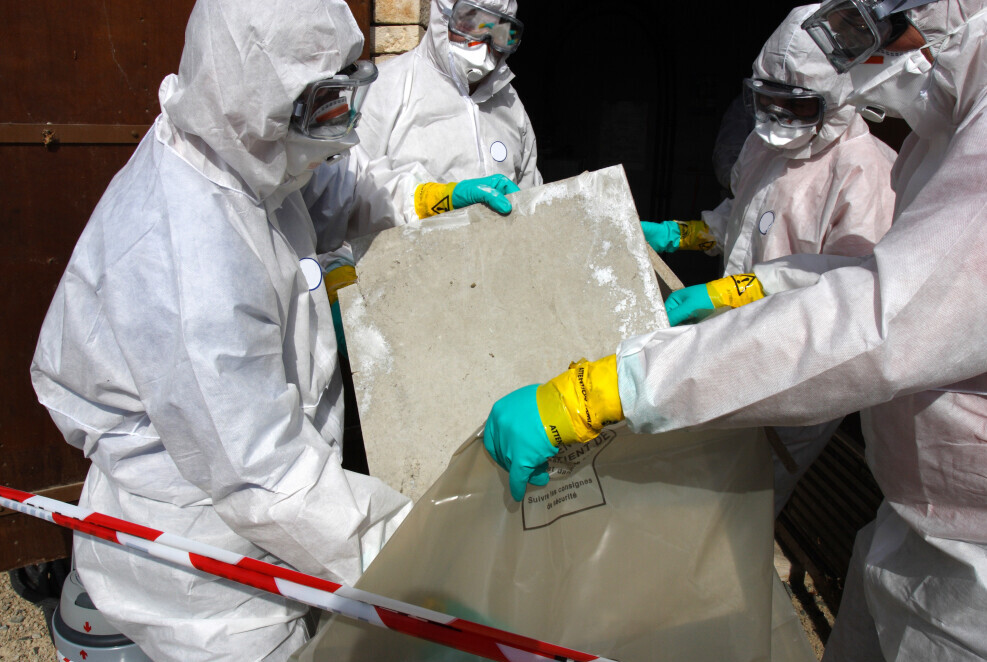Asbestos exposure poses hidden dangers that can affect the health of your family. We have checked out various studies and expert advice to provide a clear picture of the risks. Understanding these hazards is essential for anyone living in older homes or working in environments where asbestos might be present.

Health Risks Associated with Asbestos Exposure
Asbestos is a mineral fiber that was once widely used in building materials because of its fire resistance and durability. When disturbed, tiny fibers become airborne and can be inhaled. Research has linked prolonged asbestos exposure to several very important health issues. Living near or with asbestos can increase the likelihood of developing lung conditions and other respiratory problems.
The danger is not immediate. The fibers can stay in the lungs for years, causing gradual damage. This slow process means symptoms might appear long after the initial exposure. Being able to spot early signs is essential. Health conditions related to asbestos exposure include asbestosis, lung cancer, and mesothelioma. There is evidence that even indirect exposure—for example, from a family member’s clothing—might contribute to these risks. It is important to remember that these health issues typically appear after decades of exposure.
This section explains why staying aware of potential exposure sources can protect you and your loved ones from long-term harm.
Understanding Asbestos and Its Properties
Asbestos became popular because of its durability and strength. It was used in insulation, roofing, flooring, and even in some household appliances. The very properties that made asbestos useful in construction also contribute to its danger when it fragments into fine fibers.
Studying asbestos and its applications helps you figure out why it was so common in many older structures. Building standards have changed as the health risks became more known. This background is particularly important if you live in or are considering purchasing an older home. Although asbestos once had clear benefits in construction, its potential harm to health now overshadows these advantages.
While asbestos is less common in modern materials, many older buildings still contain it. This information is useful in raising awareness about how the presence of asbestos might affect your family.
How Exposure Occurs in the Home
Exposure to asbestos can occur in several ways—especially in households built before modern regulations were set in place. When building materials containing asbestos are disturbed during renovations, repairs, or natural deterioration, tiny fibers can be released into the air.
The following list highlights common sources of exposure in many older homes:
- Insulation Materials: Many older heating systems use asbestos insulation. Over time, as these materials degrade, they can release particles.
- Flooring Materials: Certain ceiling tiles, floor tiles, and adhesives contain asbestos. Continuous wear or improper repairs might trigger fiber release.
- Roofing and Siding: Asbestos cement was often used for roofing and siding. Damage or severe weather conditions may expose small fibers.
- Pipe Insulation: Older pipes were sometimes insulated with asbestos-containing materials. Maintenance work on these pipes can disturb the fibers and pose risks.
Factors such as aging, water damage, and renovations increase the risk of fibers becoming airborne. Homeowners undergoing renovations may face challenges ensuring safe practices when dealing with old building materials. This is why it is really important to get professional advice if you suspect asbestos is present.
Preventative Measures and Solutions
Protecting your health means avoiding exposure wherever possible. We have gathered practical steps you can take if you suspect asbestos in your home. With proper management, the risks can be reduced, particularly for families living in older residences.
One effective strategy is to schedule regular inspections, especially if your home was built before the 1980s. Professional assessments can determine if asbestos is present and whether it is in a state that might lead to exposure. If fibers are disturbed, affected areas should be sealed or removed. Keeping materials intact is a sensible way to prevent airborne particles.
Consider these preventive measures:
- Regular Inspections: Book assessments with certified experts in asbestos testing. Early identification of problematic areas can prevent hazards.
- Professional Removal: If tests reveal asbestos, consult professionals who can safely remove or seal the material. Improper removal might release fibers into the air.
- Safe Renovation Practices: When remodeling an older home, include an asbestos test in your planning. Involve contractors experienced with handling asbestos to ensure safe practices.
- Public Awareness: Inform family members about the risks of disturbing building materials that might contain asbestos. This knowledge can lead to safer everyday practices.
These measures help create a safer environment and reduce the unintentional spread of asbestos fibers. Although the assessment and removal process might seem disruptive, it is an investment in long-term health and safety.
Expert Tips on Managing Asbestos Exposure
Advice from experts offers guidance on how best to manage the risks associated with asbestos exposure. Their recommendations focus on minimizing exposure and addressing potential health concerns as early as possible.
If you live in an area known to have asbestos risks, it is wise to regularly monitor any changes in materials that might be affected. Regular assessments can catch deterioration before it becomes a significant hazard. The condition of insulation, flooring, or ceiling tiles should be checked periodically, especially if they are several decades old.
Following established guidelines for safe cleanup is also important if asbestos fibers are ever released. Do not try to clean up suspected asbestos materials on your own; professional help is essential since improper handling can worsen the situation.
Another useful tip is to consult information provided by reputable sources like government environmental agencies and public health organizations. These agencies offer clear steps and guidelines for managing asbestos risks. Understanding these recommendations allows you to create a plan that fits your household’s needs.
Here are additional points frequently mentioned by experts:
- Do Not Disturb: If asbestos-containing materials are in good condition, it is best to leave them in place. This is one of the simplest ways to lower risk.
- Use Protective Equipment: In unavoidable cases of disturbance, the use of proper protective gear reduces the risk of inhaling fibers. Only trained professionals with appropriate equipment should manage these materials.
- Educate Yourself: Stay informed about the potential health effects and safety procedures. This not only promotes safer handling but also encourages keeping an eye out for any issues related to older structures.
These expert tips have helped many families manage exposure in a safer manner. The aim is to protect every family member through informed actions and careful planning.
Frequently Asked Questions
Below are some common questions about asbestos exposure, answered using reliable sources and expert opinions.
Question: Is it safe to live in a home that may have asbestos?
Answer: Many homes built before modern regulations might contain asbestos. If the material remains intact and undisturbed, the immediate risk is low. However, any renovations or damage can release harmful fibers. Regular inspections and expert advice help maintain a safe living environment.
Question: What are the signs that I might have been exposed to asbestos?
Answer: Diseases related to asbestos can take years to develop. Symptoms may include shortness of breath, a persistent cough, or chest pain. If you suspect exposure, it is wise to discuss your history with a health professional for early detection.
Question: Can I remove asbestos myself?
Answer: Removing asbestos without proper training and equipment is dangerous. It is best to hire certified professionals who can assess and handle asbestos removal safely. They follow strict guidelines to minimize the risk of releasing fibers.
Question: How can I reduce the risk of exposure during renovations?
Answer: Before starting any renovations, have your home tested for asbestos. If it is found, consult professionals about remediation before work begins. Following safety measures and legal guidelines helps reduce exposure risks.
Wrapping Up
Your family’s health is very important, and understanding the risks of asbestos exposure is part of creating a safe home environment. Careful research and seeking professional advice can make a significant difference in reducing health risks. While older homes have their charm, they also come with unique challenges related to hazardous materials.
Regular inspections and safe practices when dealing with old materials can help prevent the unnecessary release of harmful fibers. Whether you plan to renovate or simply maintain your home, following established guidelines is key to reducing asbestos exposure risks.
Consider reaching out to local authorities or environmental agencies for the latest safe handling practices and update your home maintenance plan accordingly. Taking practical steps today can ensure a healthier environment for you and your family in the years to come.